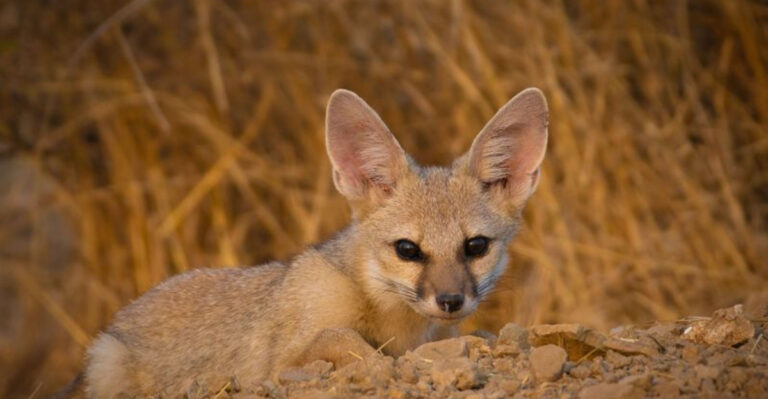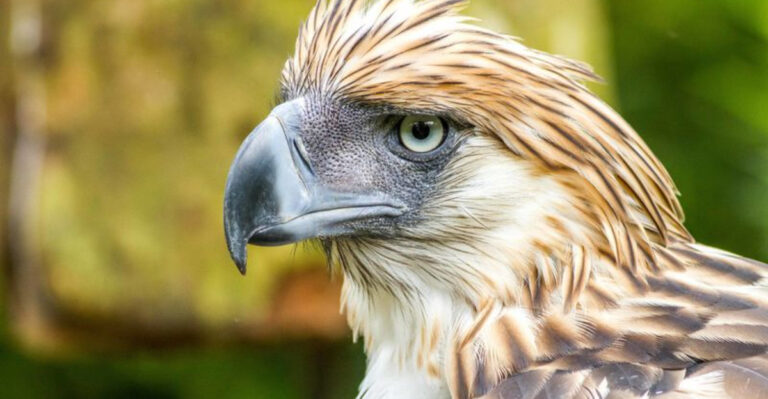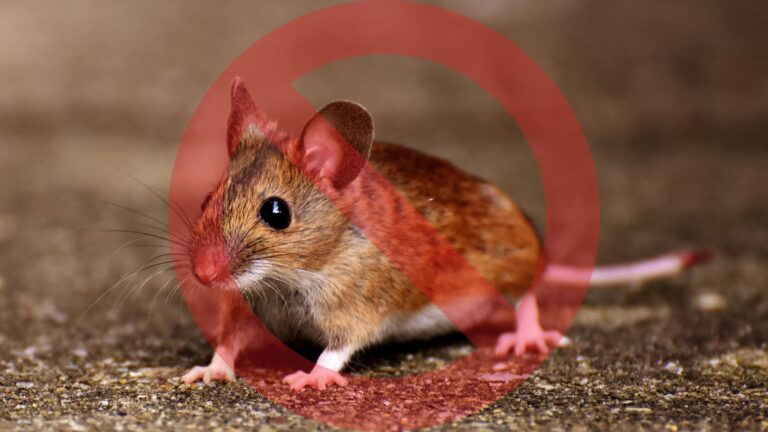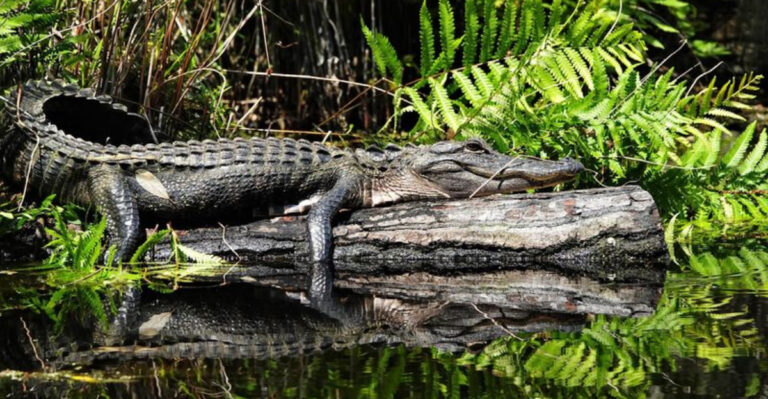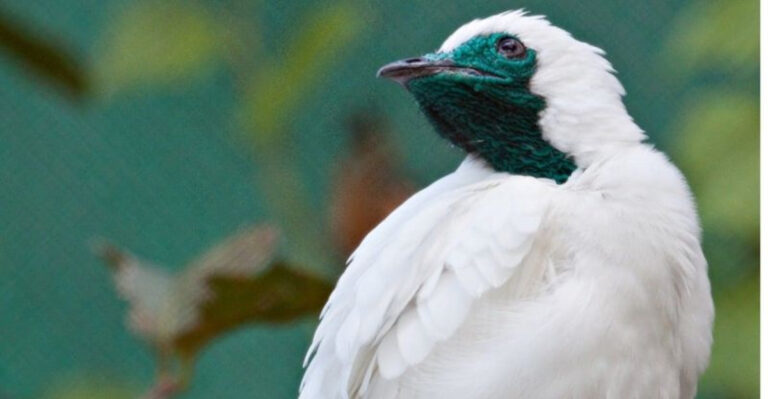12 Black Snake Species In The U.S. And Their Potential Risks (What The Data Shows)
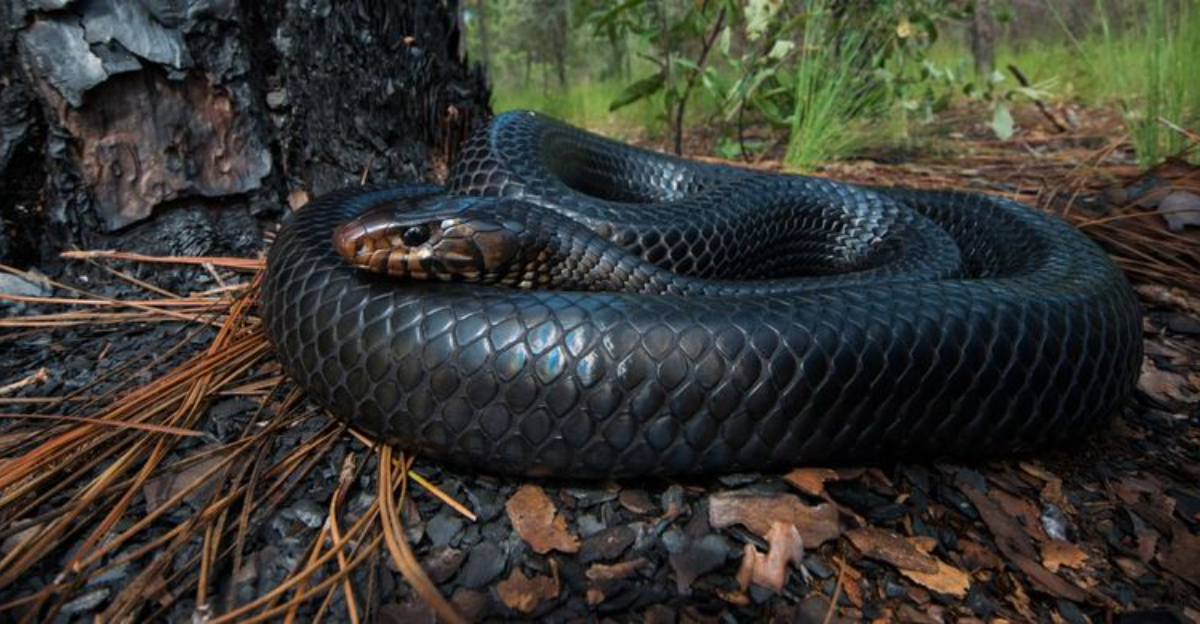
Snakes with black coloration slither through forests, fields, and even backyards across America. While many people fear these serpents, understanding which species pose actual threats versus which are helpful predators can change how we interact with them.
Let’s explore black snake species found in the United States and what science reveals about their potential risks to humans.
1. Eastern Black Rat Snake
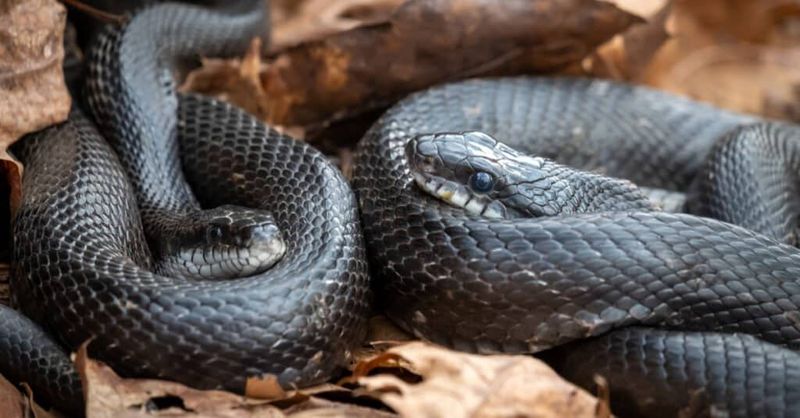
Growing up to 8 feet long, these impressive constrictors pose zero venomous threat to humans. They’re actually beneficial neighbors, controlling rodent populations that spread disease.
Farmers often welcome these snakes around barns and outbuildings. When startled, they may vibrate their tails against leaves, mimicking a rattlesnake’s warning.
2. Black Racer Snake

Aptly named for reaching speeds up to 4 mph, Black Racers flee from humans rather than confronting them. Their slender bodies and quick reflexes make them exceptional hunters.
Though non-venomous, they’ll defend themselves by striking repeatedly if cornered. Young racers sport a different look—brown with reddish-brown blotches that fade as they mature.
3. Southern Black Racer
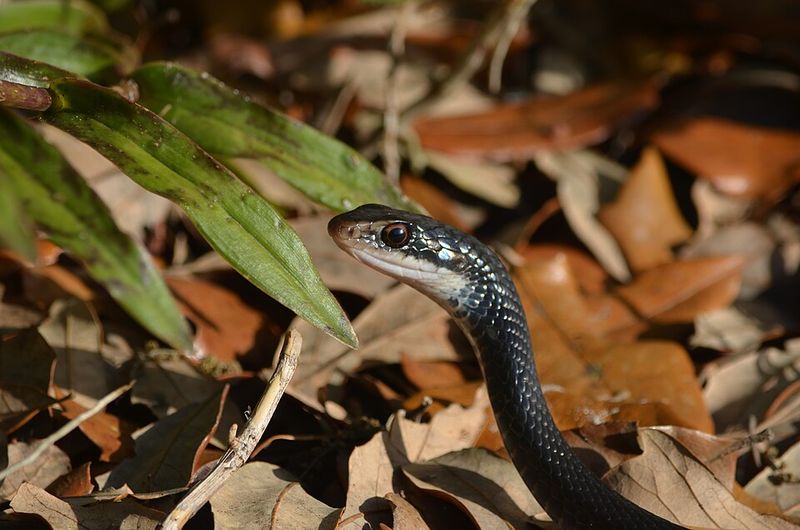
Found throughout Florida and neighboring southeastern states, these racers have a distinctive white chin patch. Morning hunters by nature, they warm themselves in sunlit areas before beginning their daily quest for prey.
Curiously, they’ve been observed eating venomous snakes without harm. Their diet also includes frogs, lizards, and even other racers.
4. Black Kingsnake
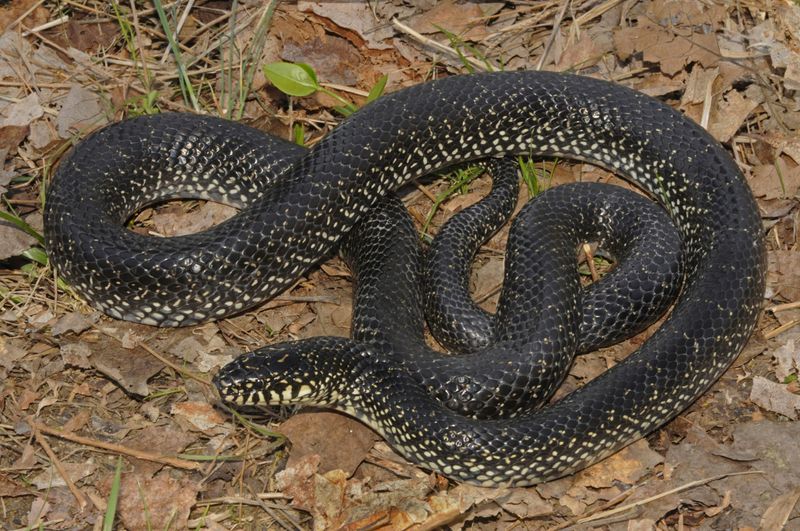
Sporting a shiny black coat sometimes accented with tiny white speckles, these constrictors are immune to pit viper venom! They fearlessly hunt and consume rattlesnakes, copperheads, and cottonmouths.
Rural homeowners celebrate their presence as natural pest control. Kingsnakes will even climb trees to raid bird nests for eggs, showing their impressive adaptability.
5. Eastern Indigo Snake

America’s longest native snake reaches an impressive 8.5 feet and wears scales with a purplish-blue iridescent sheen. Protected under the Endangered Species Act since 1978, their populations have declined dramatically.
Gently natured despite their size, indigos rarely bite humans. They require gopher tortoise burrows for shelter, linking their survival directly to another threatened species.
6. Western Black Rat Snake

Master climbers with incredible grip strength, these snakes scale vertical tree trunks with ease. Farmers value them for controlling rodents that damage crops and spread disease.
Their defense strategy involves releasing a foul-smelling musk when handled. Young specimens look completely different from adults, featuring a pattern of gray blotches on a lighter background.
7. Northern Black Racer

Morning sunshine brings these speedy serpents to life across New England and Mid-Atlantic states. Unlike many snakes that flee when spotted, Northern Black Racers sometimes hold their ground, raising their heads to observe potential threats.
Their diet changes seasonally—spring meals feature amphibians while summer brings a menu of insects and smaller reptiles.
8. Black Pine Snake

Longleaf pine forests house these muscular, keeled-scale beauties that spend 60% of their time underground. Their population decline stems from habitat destruction—over 97% of longleaf pine ecosystems have vanished.
When threatened, they emit a loud hissing sound by forcefully expelling air. Their defensive display includes flattening their heads and vibrating their tails rapidly.
9. Louisiana Black Snake
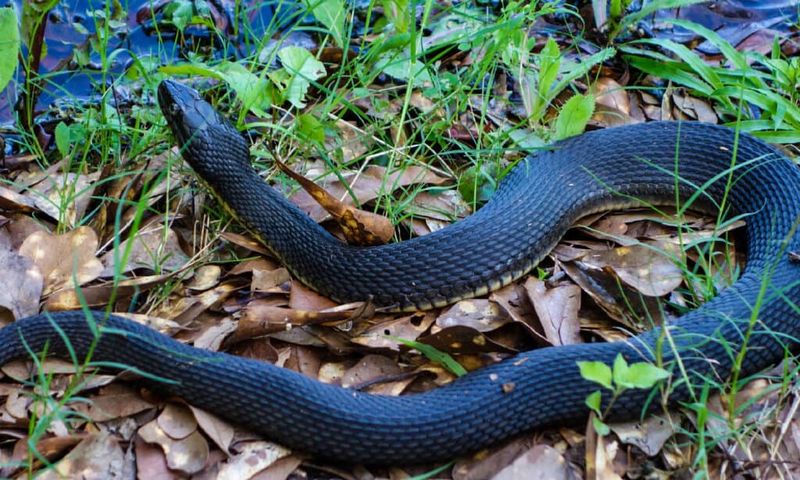
Bayous and cypress swamps hide these secretive swimmers that hunt fish, frogs, and crawfish in murky waters. Local folklore claims they bring good luck to properties where they reside.
Their glossy scales appear almost blue-black in certain lighting. Remarkably adapted to semi-aquatic life, they can remain submerged for extended periods while hunting prey beneath the water’s surface.
10. Gulf Coast Black Snake
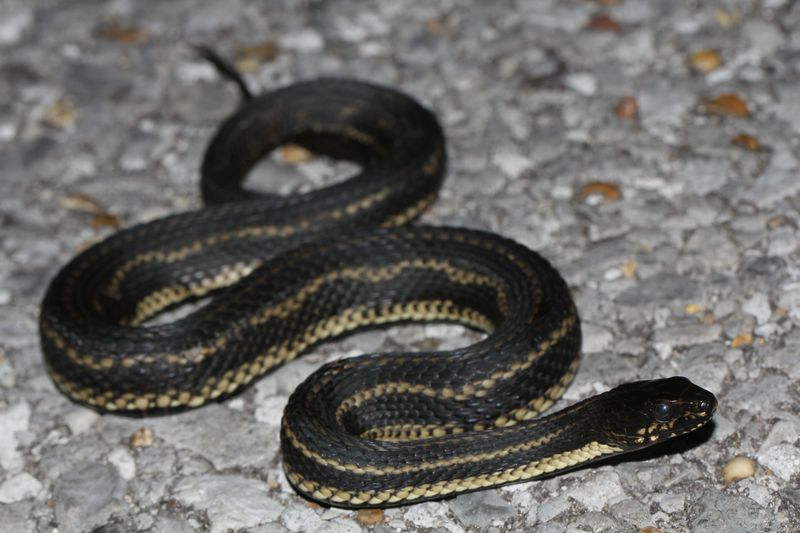
Salt marshes and coastal plains harbor these specialized hunters that thrive where freshwater meets the sea. Hurricane survivors by nature, they’ve evolved to withstand periodic flooding of their habitats.
Fishermen occasionally spot them swimming between barrier islands. Their diet specializes in marsh-dwelling rodents and shore birds’ eggs, making them important controllers of beach-nesting predators.
11. Texas Black Rat Snake
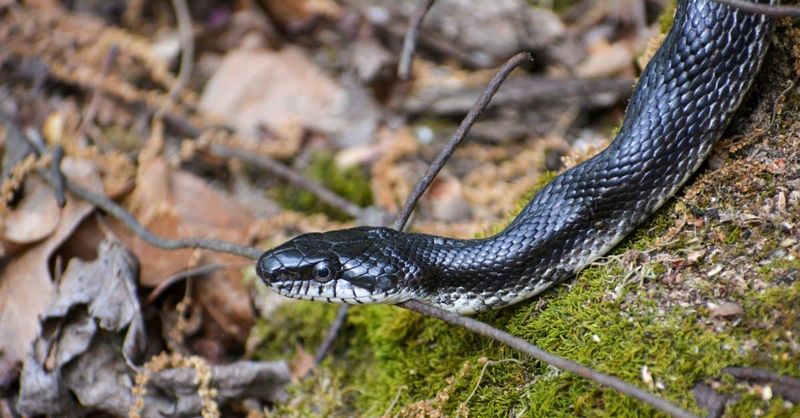
Lone Star landscapes from prairies to piney woods host these adaptable hunters with varying color patterns—some nearly jet black, others showing subtle checkerboard patterns. Ranch owners welcome them for controlling rodent populations around livestock feed.
Unlike many snake species, they’re somewhat tolerant of human presence. Females lay impressive clutches of 12-20 eggs, often in rotting logs or abandoned rodent burrows.
12. California Black Racer
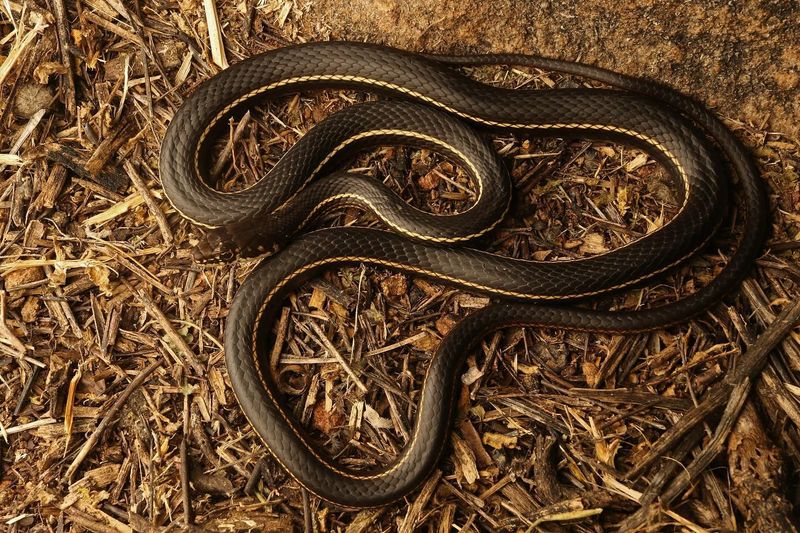
Sunshine state serpents patrol chaparral and coastal sage habitats with lightning-quick movements. Wildfires actually benefit these adaptable reptiles by clearing dense vegetation and exposing prey.
Their eyes feature distinctive round pupils unlike the vertical slits of venomous species. During drought years, they’ll travel surprising distances to find water sources, sometimes appearing in suburban yards with irrigation.

